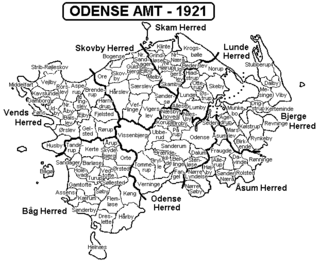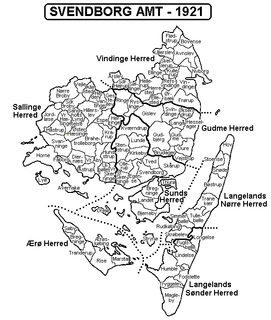
Landstinget was the upper house of the Rigsdag in Denmark from 1849 until 1953, when the bicameral system was abolished. The house had powers equal to the Folketing, which made the two houses of parliament hard to distinguish.

The Danish Folketing election of 1915 was held on 7 May 1915. As required to change the Constitution, the government called for the dissolution of both the Folketing and the Landsting in order for the new Rigsdag to be able to introduce the new constitution. However, as this was during World War I, no campaigning took place, and the election was settled without voting in 104 of 114 constituencies. Therefore, it is impossible to give numbers for the actual support the respective parties received from the voters.

Folketing elections were held in Denmark on 26 April 1920, except in the Faroe Islands, where they were held on 20 May. The election campaign was the most aggressive and bitter in Denmark in the 20th century. Voter turnout was 80.6% in Denmark proper and 58.8% in the Faroe Islands.
Landsting elections were held in Denmark on 11 May 1918, with the exceptions that the seats elected by the resigning parliament were elected on 20 March 1918, the Faroese member was elected on 13 May, and the electors that elected the candidates standing in the constituencies were elected on 30 April.
The first Danish Landsting election of 1920 was held on 10 August 1920, with the exceptions that the seats elected by the resigning parliament were elected on 26 June, the Faroese member was elected on 23 August, and the electors that elected the candidates standing in the constituencies were elected on 30 July.
The second Danish Landsting election of 1920 was held on 1 October 1920, with the exceptions that the seats elected by the resigning parliament were elected on 10 September, except for the representative of South Jutland County who was elected on October 7, the Faroese member was elected on 3 February 1921, and the electors that elected the candidates standing in the constituencies were elected on 24 September 1920.
The Danish Landsting election of 1902 was held on 19 September 1902, with the exception that the Faroese candidate was elected on 6 August.
The Danish Landsting election of 1910 was held on 20 September 1910, with the exception that the Faroese candidate was elected on 1 September.
The Danish Landsting election of 1939 was held on 14 April 1939, with the exception that the electors that elected the candidates standing in the constituencies were elected on 3 April.
Folketing elections were held in Denmark on 20 April 1892.
In the Danish Folketing election of 1890, which was held on 21 January 1890, the approximate total votes and the actual seats won were:
In the Danish Folketing election of 1887, which was held on 28 January 1887, the approximate total votes and the actual seats won were:
In the Danish Folketing election of 1884, which was held on 25 June 1884, the approximate total votes and the actual seats won were:
A constitutional referendum was held in Denmark on 23 May 1939. Voters were asked whether they approved of a new constitution. Although it was approved by 91.9% of those who voted, a turnout of only 48.9% meant that the percentage of eligible voters approving it was only 44.46%, below the 45% required by the existing constitution of 1915.
The Danish Landsting election of 1928 was held on 21 September 1928, with the exceptions that the electors were elected on 14 September, that the candidates elected by the resigning parliament were elected on 15 August, and that the Faroese candidate was elected on 23 August.
The Danish Landsting election of 1932 was held on 13 September 1932, with the exception that the electors were elected on 5 September.
The Danish Landsting election of 1936 was held on 22 September 1936, with the exceptions that the electors were elected on 15 September and that the candidates elected by the resigning parliament were elected on 14 August.
The Danish Landsting election of 1943 was held on 6 April 1943, with the exception that the electors were elected on 23 March. Along with the corresponding Folketing election, it was the first election during the German occupation, and although many people feared how the Germans might react to the election, the event took place peacefully.
The Danish Landsting election of 1947 was held on 11 April 1947, with the exceptions that the electors were elected on 1 April 1947, that the candidates elected by the resigning parliament were elected on 7 March, and that the Faroese member was elected on 26 March.
Events from the year 1902 in Denmark.






